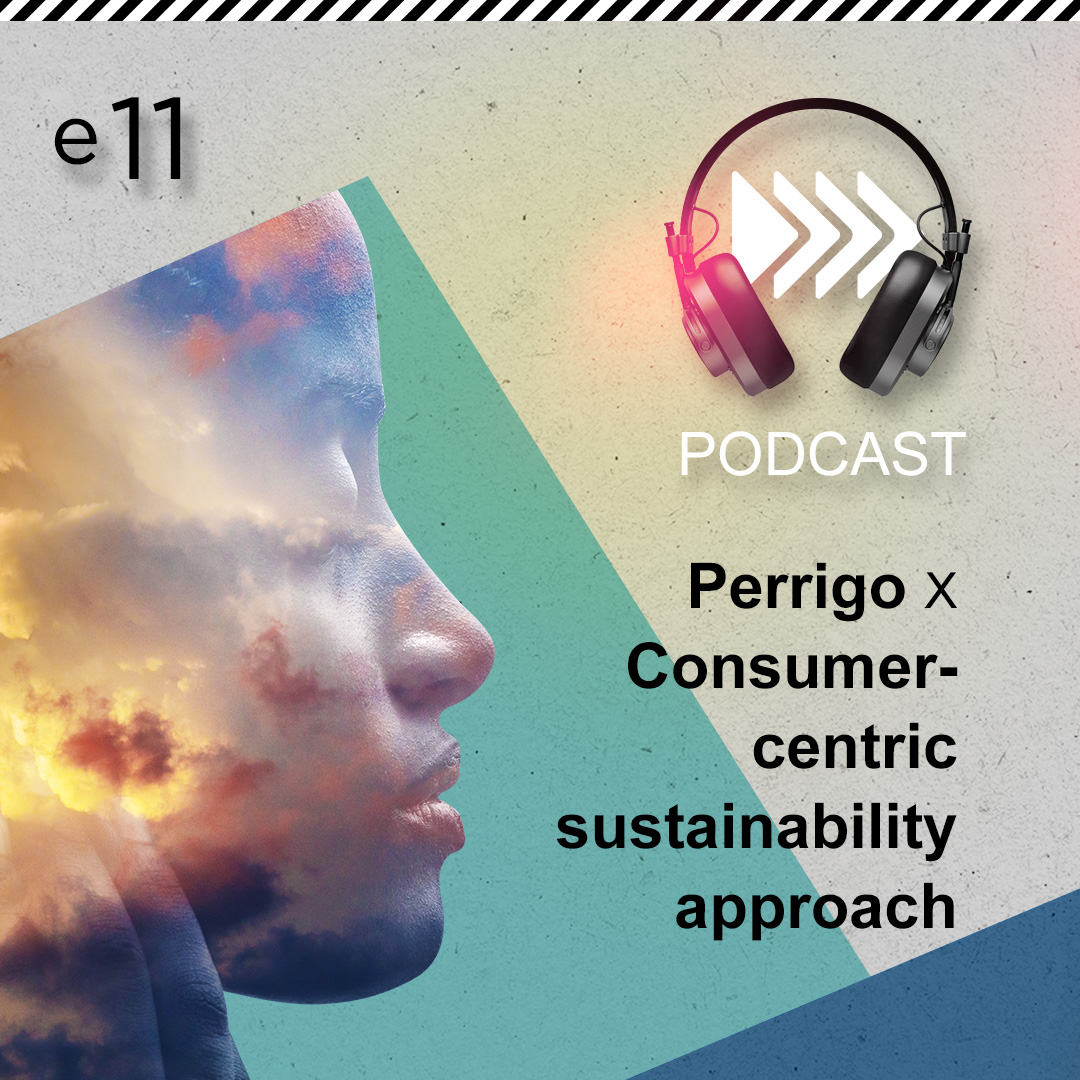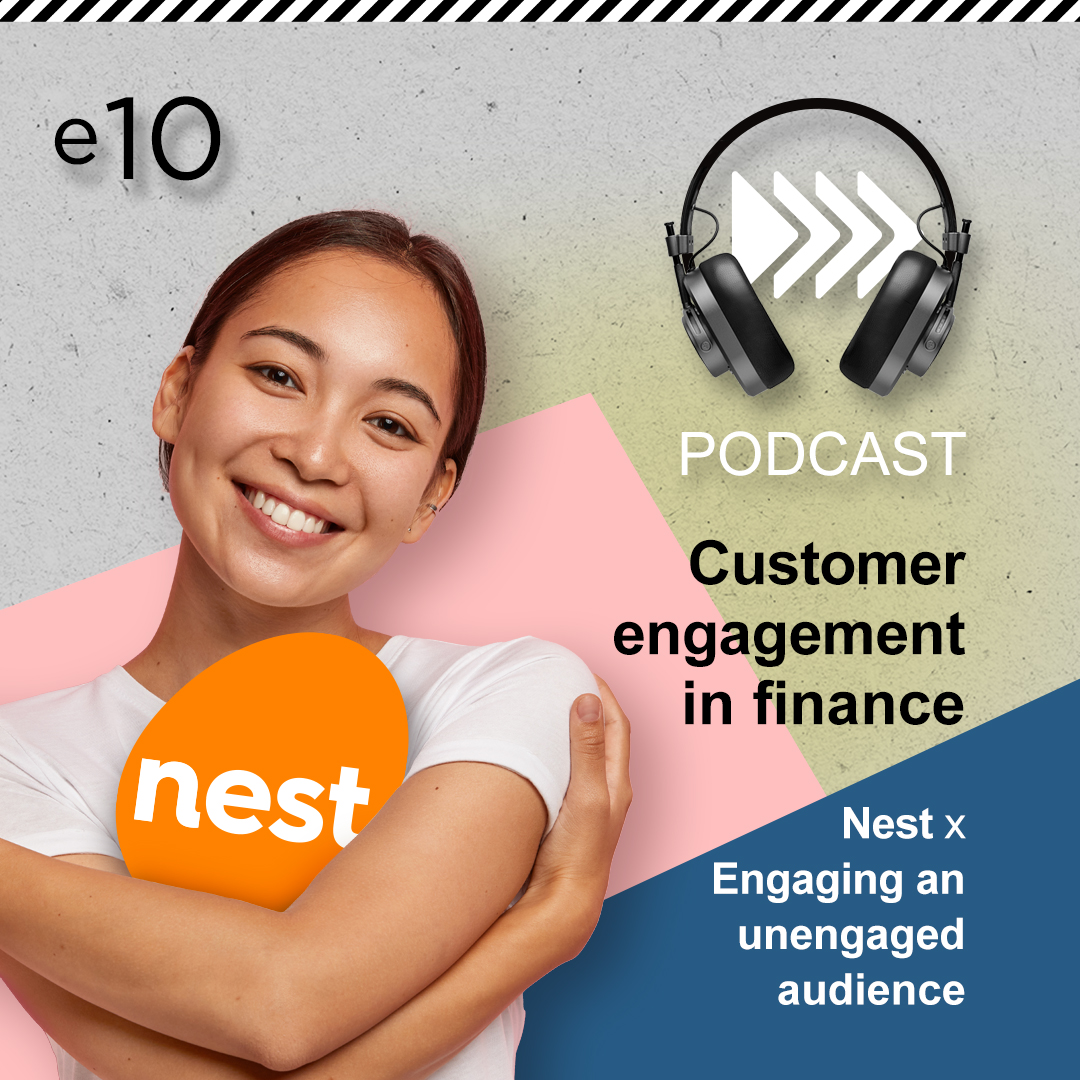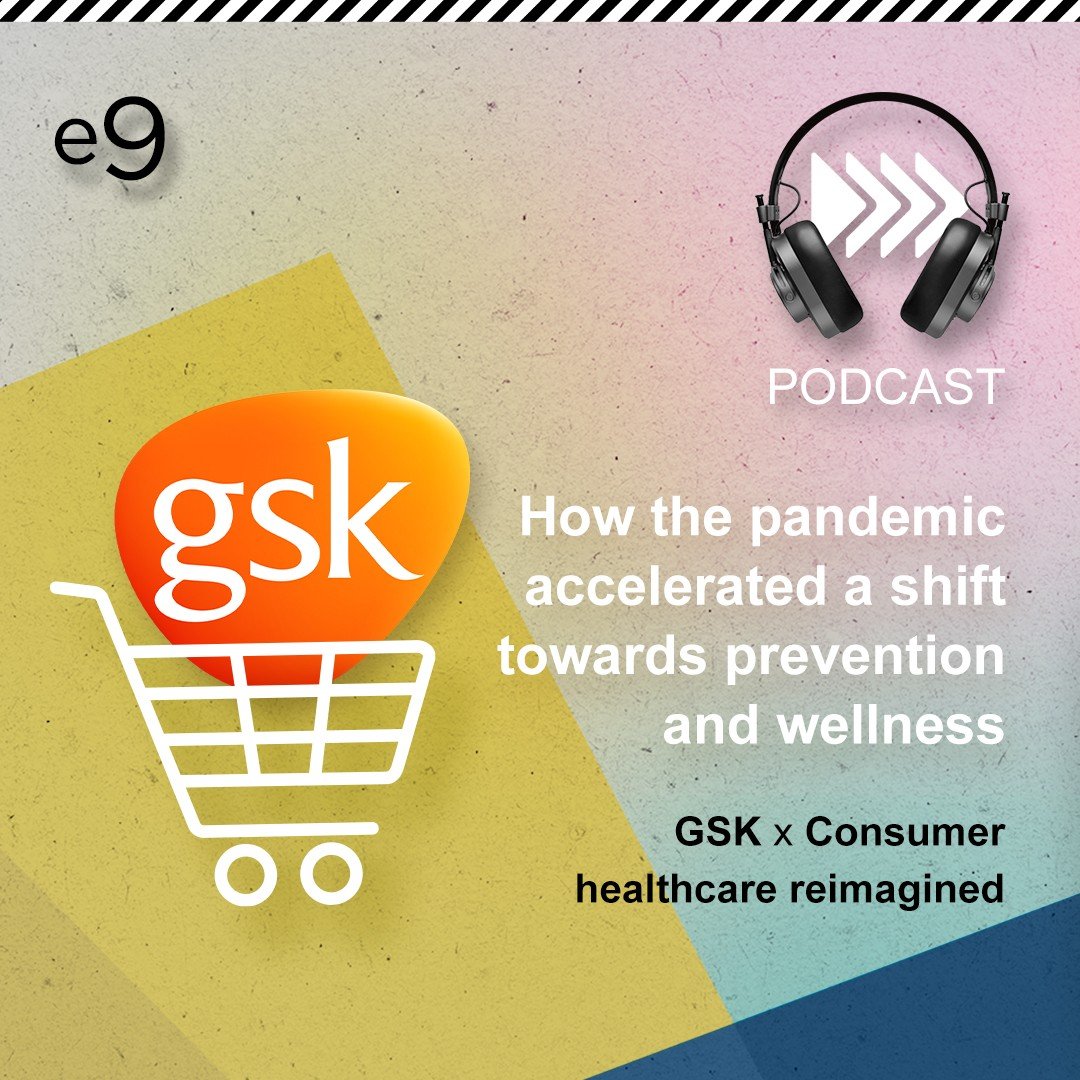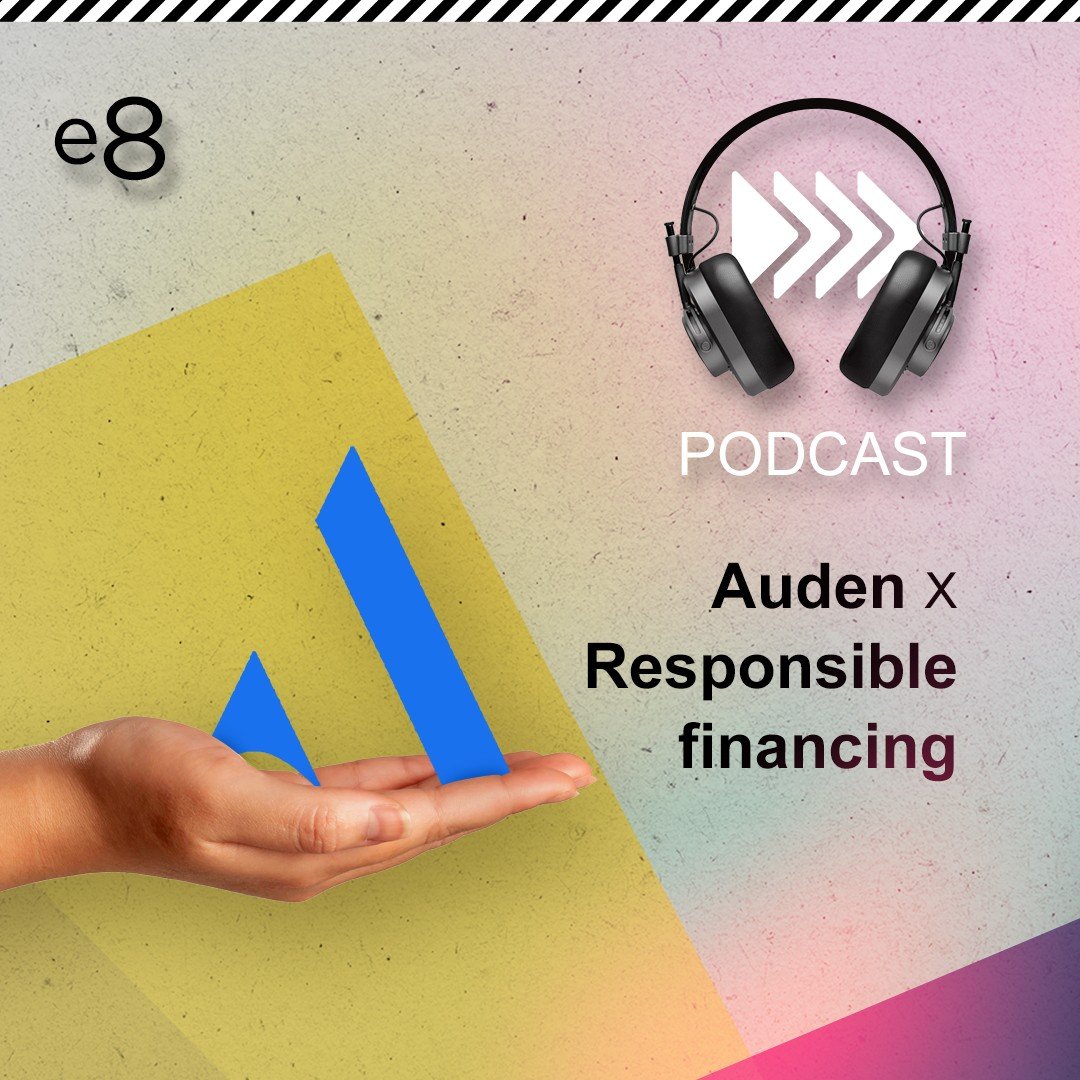Script
Otilia: Do you have a pension plan, and do you know how much you’ve already saved? Or how the pension scheme invests your money? No? Well, then you’re not the only one. According to UK pension provider Nest, the majority of their members is not engaged with their services, meaning that they don’t know how many savings they’ve got, when they can retire, or how they can afford that. Welcome to the InSites Consulting podcast. In this episode, we talk with Eve Read and Dominika Wintersgill from Nest about what it means for a brand to deal with such an unengaged audience and how they approached this. But let’s first hear from Eve what Nest is all about.
Eve: Hello, my name is Eve Read. I am the acting director of customer engagement at Nest. Nest is a pension provider. We are a not-for-profit, so we were set up by the government under what’s called a public service obligation to serve the least commercially attractive parts of the pension market. For example, organizations with high turnover or transient staff, or very small employers like a village hairdresser, a small building firm or an individual who has hired as a nanny. So, our customer base is skewed towards the smaller end of the market, although we also have big companies using us as well. Nest’s coverage within the UK, at least in the auto-enrolment sector of pensions, is quite high. We have around 10 million members, 950,000 employers use us, and we now have assets that we manage of around £22 billion.
Otilia: Nest is active in the ‘auto-enrollment’ sector, meaning that its members do not choose Nest, their employers do. And this comes with many challenges.
Eve: So, pensioners in the UK is quite challenging in a number of areas. Engagement, as we call it, is a particular issue. Interaction with our customers, particularly members, is quite challenging for pensions. It’s not a product that they regularly engage with like they might other parts of financial services like banking. And within the auto-enrollment sector which we participate in, members don’t choose their product, it is chosen for them by their employer. So quite often, they don’t even realize they’re saving with Nest. So the outcome is that we only have around 30% of our members registered online with us, which means that 70% of our members have very little idea about how much they have in their saving pot with Nest. And it’s difficult to work with such an unengaged audience. And then we have a couple of other challenges. So, the transition to work and retirement is quite a complex area for lots of people, and there’s been a change in pensions from what’s called ‘defined benefit schemes’ to ‘defined contribution schemes’, where individuals are responsible for how much savings they have going into their account, more so than they used to be in the past. And if people aren’t engaged with their online pension account, they don’t know how many savings they’ve got, it’s less clear to them when they can retire and how they can afford to do that. And this topic of ‘adequacy’ as we call it in the pensions arena is really important for us to help our members to understand better because it would support better decision making.
Otilia: So, how does Nest deal with this unengaged audience?
Eve: The challenge of engagement is a very complex one for us to try and solve in the pensions area. Part of that is because it is so far in the future for lots of people that it’s difficult for them to think positively about saving some more into their pension fund when actually they might have day-to-day financial challenges right now, like paying for bills or saving to be able to purchase a house, etc. However, we have a program of activity that we use that is multifaceted to try and come at this from a number of different dimensions. We have a program of test-and-learn activity whereby we use emails to different members, we might do AB testing with different topics or different subject lines, to see how that impacts people’s activity. We use triggered communications, so when we see something happen in their account or in their life or that something gets flagged, we can send them a specific communication. And that might be when they reach a certain age, for example, a number of years out from retirement that we would start talking to them slightly differently or about different actions. We have what we call our activity through employers. So, we would use employers to talk directly to members, because it’s a relationship that’s very well established and more than the relationship that they might have with us at Nest. We also try to target our communications around the future. But in reality, it is still a big challenge. We don’t have all of the answers, and we’re very much testing and learning as we go here.
Otilia: Let’s check in with Dominika, who is a research manager at Nest, about how this testing and learning happens!
Dominika: Hi everyone, I’m Dominika Wintersgill, and I’m a Research Manager here at Nest. I look after our ‘voice of the customer’ program, which is a number of surveys we run with audiences such as members, intermediaries and employers. I’m also looking after our ‘Your Way’, which is an online community, and I’m engaged in a few other internal insight programs as well. As Eve mentioned, it’s a huge challenge for us to engage, and we want to engage on the terms of our members and employees rather than the way we think we should be engaging. Because that’s the only way that it works. So, we do a lot of research into what our members’ needs are, where they are in their lives, how can we make pensions fit into their lives as they are now, rather than expect them to make huge changes? We do know from our research and academic research that people tend to focus on themselves today a lot more than their future selves. That’s just a very human thing to do. So, we test a number of approaches with members to see how we can help them bridge that gap between themselves now and themselves in the future. Because in the end, people care about their future, but the pensions are an abstract concept.
Otilia: Nest tests for example different types of email content and headings to better understand their potential to engage people. But next to trying to connect its consumers with their future selves, Nest also wants to connect them with how their money is invested, making it more tangible where it is invested and what it’s doing for them.
Dominika: One thing we’ve done very recently and hope to do more in the future is, we invested in a solar-panel farm for a partner, and we actually invited a few of our members that happen to be in our community as well to have a cup of tea and walk around this solar panel where their money is working hard for them. I think that’s fantastic, and loads of research we’ve done in the past indicates that it is much easier for people to connect with these abstract concepts when we break it down to something they understand on an individual basis.
Another thing we’re doing is: we’re at the moment piloting Tumelo.
Otilia: Tumelo is a platform that shows investors the companies they own, and empowers them to engage on issues they care about. For Nest’s members, this means they can see how their pension money is invested, in what companies and in what asset classes.
Dominika: So, there’s some very big brand names that people immediately recognize; there’s others they might not recognize. But again, it makes a clear connection: “This is my money and it’s working for me because it’s invested in this company that I use myself. Okay, now it makes sense, now I can see it.” It’s still in pilot stage, but our early indications are that it does help a lot to forge that connection between this abstract concept and the reality which is: this is your money, and Nest is just looking after it for me.
Otilia: While we talked a lot about engaging Nest’s members, the company also pays attention to engaging its internal stakeholders, connecting them directly with their members, to fuel consumer-centric thinking across the entire organization.
Dominika: You would think that’s an obvious thing, but it’s really hard for senior people who make decisions on an operational basis or legal issues, to really hold the individuals in their hearts when they’re dealing with massive decisions regarding millions of people. So, what we’re doing is, we’re piloting a ‘customer closeness’ program where we’re connecting senior leaders around Nest with members, employers, intermediaries, just to have a chat. Sometimes about nothing specific, but more about the role of pensions and the role of Nest, and exactly how best we can engage this particular individual. We’re not asking about how to engage the 10 million members we have. We’re saying, “How about you, what can we do for you?” And then, this conversation flows and it brings everything up to the surface about the lack of knowledge and the lack of connection between these abstract concepts and the real people on either side. There’s a real person at Nest working very hard and there’s a real person saving with Nest. So, this is something we just started, and I think it’s going to just grow and grow because there’s a lot of enthusiasm around the company to get involved and spend some time with our members.
Otilia: An obvious question of course, is: what is the impact of all these engagement efforts? Does Nest see a difference, for example, in the number of people who register for an online account? Eve tells us they already see a positive impact, yet it is much of an ongoing process.
Eve: We have seen progression over the last few years, from the high 20% or mid-high 20% through to now around 36%, I think, of our currently contributing part of our membership that is now engaged and registered with their online account. So, it’s definitely having an impact. But one of the challenges still is to reach that other 60-odd percent of our population. It’s the challenge of working out how to contact that audience and get them to read emails, to look at what we’re sending through, to consider whether they’re savings are adequate enough to fund their retirement once they get there. That’s the biggest challenge that we still need to crack the nut on. Because at the moment, we’re nibbling at the edges, and we are seeing progress, but it’s not quite as fast as I would like it to be.
Otilia: Another nut to crack is responsible finance, with consumers making the shift to more sustainable lifestyles; so is the financial industry. Nest is actively trying to put the people and planet factor in the investment equation.
Eve: It does engage, it appears to engage our members as a topic, something that’s of strong interest to them. But more broadly as well, we think ethically, it’s something that, as a long-term investment organization, we should be thinking seriously about. Our members are saving for their future, so we want to think carefully about who we’re investing in, to ensure that we grow and protect their money for many years to come. And one of the ways we do that is by considering how the companies and markets we invest in treat people and the planet. That’s why responsible investment is one of our core investment beliefs, as we call them.
Otilia: Dominika explains how Nest actively engages with its members to understand what to include in their investment bundle.
Dominika: So, regularly we ask people, “How do you feel about Nest investing in X, Y and Z?” And then we ask them about specific industries. It could be some obvious things like weapons and so on, but maybe less obvious things, such as cannabis or investing in gambling, things like that. So, we continuously check with our members how they feel about all these industries. And that’s something that goes into our investment strategy. The investment strategy is of course a lot more sophisticated than just asking people for a few opinions, but it does go in there, and that’s something we use for engagement as well. Our research shows that three quarters of members say responsible investment is important to them. But at the same time, the same research tells us that a similar number of people also care about their pension growing and growing at a good rate.
Otilia: Nest Insight, the brand’s collaborative research and innovation unit, published a report called ‘Responsible Investment as a motivator of pension engagement’. In this report, Nest Insight examined whether communications about the positive impact of pension investments could make savers more likely to engage with retirement saving. During their study, Nest Insight tested several messages to encourage people to register to their online Nest account.
Dominika: And actually, out of those four messages, the overall best impact was through a messaging that just said something very simple, about: ‘This is your savings, have a look’. It outperforms ESG messages overall. But ESG messaging outperforms any other messaging in the group of people that already indicated “I’m interested in climate change”, “I’m interested in better working conditions”, and so on. So, the struggle for us is to tackle it from various angles. So, talk about issues that matter to people that hold those issues close to their hearts, and that is the challenge.
Otilia: So, what does the future hold for Nest? Eve closes this interesting conversation sharing some more concrete plans on how Nest is trying to boost relevance for its members.
Eve: We’ve recently announced that we are moving to a new administration provider, and within the next year or so, we will launch a new platform with Atos, which is really exciting news for us as an organization, and will give us lots of new tools that we can play with, in particular in the engagement space. The data that we’ll have access to will be fundamentally different from what we do right now and will enable us to get a much better handle on who our members are and where they are at that stage of their life. So, for example, if we know that a member has got a new job at a higher salary level, we might be able to prompt them to consider increasing their pension contributions in order that their retirement meets the target that they want to meet. So, all of these things coming together in the next two years or so will enable us to be more targeted and more personalized in our communications, which we hope will then create greater engagement and greater retirement savings.
Otilia: Did you enjoy this podcast episode? Subscribe to our podcast and automatically receive the newest episodes. This episode was written by Sarah Van Oerle, produced by Ben Edwards, and hosted by me, Otilia Onea. A special thank you to Eve Read and Dominika Wintersgill from Nest for joining this episode. And of course, thank you for listening.
If you want to find out more about InSites Consulting and our work, just go to insites-consulting.com/podcasts, or subscribe to our podcast on Soundcloud or Spotify.





